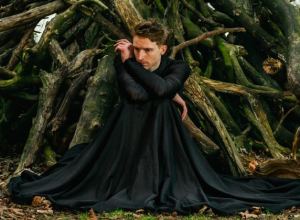Tutankhamun's Burial Mask, Accidentally Damaged In 2014, Will Be Restored To Former Glory
By Elinor Cosgrave in Bizarre / Weird Wonderful on 25 January 2015
The Egyptian Museum in Cairo has confirmed King Tut's burial mask was damaged accidentally in August 2014 but can be sensitively restored.
King Tutankhamun's mask can be restored to its former glory after a previous reparation job left the mask crudely glued back together. The Egyptian Museum in Cairo, where the mask is housed, announced on Friday (23rd January) the mask would be more sensitively repaired.
#Tutankhamun Beard-gate" real-time updates: follow @monznomad #tweets roll @saveantiquities pic.twitter.com/5caXfhphg1
— Archaeology & Arts (@archaiologia_en) January 23, 2015The mask was accidentally damaged in August 2014 when museum workers were working on the lights in the exhibition space and bumped into the artefact's display case. The mask's beard was knocked off and the mask was scratched. The museum did not initially reveal the mask had been damaged until photographs, taken by museum visitors, were shared on social media and prompted a public outcry.
The famous blue and gold mask was initially repaired with glue and traces of it are evident on the mask. It was, according to reports in ABC, a rushed job after one of the museum staff panicked. "This mistake can happen. But what caused it to get worse? The curator was scared and he fixed it hastily," a museum official explained. The curator reportedly used the wrong type of adhesive which dried quickly when the restoration process demands slow drying glue so it can be removed or adjusted over a 24 hour period.
Egyptian officials, including the Antiquities minister, Mahmud al-Damaty, have previously defended the museum and the actions of the unfortunate curator. "The job was done correctly" al-Damaty stated.
However, experts in the field of Egyptian antiquities have confirmed the mask has been crudely restored but the extent of the damage has been exaggerated. Indeed, one group was so concerned with the object's condition they were considering pressing charges against the Museum.
Christian Eckmann, a specialist the museum requested to evaluate the damage, explained how the restoration was not done "properly" when the mask was damaged in August. "The use of epoxy [glue] is not the best, but it is a solution. However this measure was unfortunately done not really properly, so you can see now some remains of glue at the beard," Eckmann said.
Contactmusic
Suggested

Leisure Festival - Dreamland in Margate
On the same day that Glastonbury welcomed back Margate's adopted sons, The Libertines, Margate itself put on it's very own Leisure Festival as it...

Pretty Fierce talk to us about collaborating with Doja Cat, emetophobia, arena tours and staying "true to yourself" [EXCLUSIVE]
Sheffield's very own all girl group Pretty Fierce are still on a high after the recent release of their debut single - 'Ready For Me'.

Will Varley & Jack Valero - The Astor Theatre Deal Live Review
Three nights before the end of his current tour Will Varley returned to his home town of Deal to delight a sold out crowd in The Astor Theatre.

WYSE talks to us about her "form of synaesthesia", collaborating with Radiohead's Thom York and the prospect of touring with a band [EXCLUSIVE]
With only a few days to go before Portsmouth based songstress and producer WYSE releases her new single, 'Belladonna', we caught up with her to find...
Advertisement

Bay Bryan talks to us about being a "wee queer ginger", singing with Laura Marling and being inspired by Matilda [EXCLUSIVE]
Colorado raised, Glasgow educated and Manchester based Bay Bryan is nothing if not a multi-talented, multi-faceted artist performing as both...

Keelan X talks to us about staying true to "your creative vision", collaborating with Giorgio Moroder and being "a yoga nut" [EXCLUSIVE]
Former Marigolds band member Keelan Cunningham has rediscovered his love of music with his new solo project Keelan X.
![Luke De-Sciscio talks to us about having the courage to be yourself, forgiving that which is outside of one's control and following whims [EXCLUSIVE] Luke De-Sciscio talks to us about having the courage to be yourself, forgiving that which is outside of one's control and following whims [EXCLUSIVE]](https://images.contactmusic.com/images/home/homepage/luke-de-sciscio-abof-a.jpg)
Luke De-Sciscio talks to us about having the courage to be yourself, forgiving that which is outside of one's control and following whims [EXCLUSIVE]
Wiltshire singer-songwriter Luke De Sciscio, formally known as Folk Boy, is set to release is latest album - 'The Banquet' via AntiFragile Music on...

Annie Elise talks to us about the challenges a female producer has to face and "going through a year of grief and sickness" [EXCLUSIVE]
Electronic music pioneer and producer Annie Elise says that the release of her first EP - 'Breathe In, Breathe Out' feels "both vulnerable and...
Advertisement
